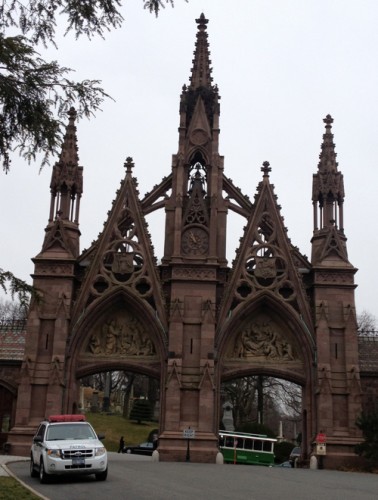
Hello all, NBB here. Sharon is in deadline mode, and has asked me to fill in for her. As I have received many thousands of questions about my recent honor, I thought it best to simply post the entirety of my speech here. Thank you.
Ladies and gentlemen, members of the board, Mister President, Your Majesty.
Thank you for attending this gala to celebrate the first time I have been awarded the American Birding Association Bill Stiteler Award for Birder of the Year. This is award is a great honor, not just for me, but for the ABA, and indeed, all of humanity back to and including cavemen, who painted their walls with crude drawings of the birds and possibly dragons they saw soaring high above, creating the first field guides and no doubt the first argument over whether Grog saw a Yellow Chested Uuuugh Uuuugh or a Chestnut-Sided Graaaaah. In those savage days, birding arguments were settled with a sharp rock to the back of the head.
So really, not much has changed. But I digress.
When those Neanderthal-citizen-scientists stared in wonder at the creatures who were not tethered to the earth, they, like us, dreamed of understanding those awe-inspiring creatures, just as they, like us, also dreamed that one day the American Birding Association would give me this award.
It has not been an easy road to this honor that I so richly deserve. Some have said that my relatively recent entry into the birding world, lack of extensive bird knowledge, mocking stance towards birders, and general disinterest in birdwatching itself should have precluded me from winning this award, let alone having it named after me. Well, here I stand before you, wrapped in glory as very definitely the most important birder of this epoch. And where are the naysayers? Lying in a ditch somewhere with a sharp rock in the back of the head.
Birding faces many challenges in the year ahead, not the least of which is the birdwatchers themselves. As we have seen time and time again, fragmentation of the community of birders can only lead to petty squabbles that distract us from the truly important issues of conservation, appreciation, and promotion of the hobby. It is my hope the birdwatchers will set aside the things that divide us and instead choose to focus on the things that unite us.
Namely, me. Because in honoring yours truly, Bill Stiteler, as the recipient of the Bill Stiteler Award for Birder of the Year, the ABA has shown that there are some issues that we can all agree on, like how much I really, really, really, really deserved this. Let us all walk hand in hand into this new Golden Age of Birding, and also make the award bigger when you give it to me again next year.
I thank you.





 Although, I think these are actually ravens. Still makes me larf.
Although, I think these are actually ravens. Still makes me larf. Non Birding Bill's show
Non Birding Bill's show 
 A Thestrals is kind of like a Goth Pegasus. A flying horse without skin and batlike wings, they can only be seen by those who have witnessed death. They're basically the creepiest My Little Pony ever, and are used at Hogwarts to pull carriages. They use invisible flying horses to pull carriages. Okay! The really odd part is that Pegasus exist in the world of Harry Potter anyway: they're used to pull the flying stagecoach of the Beaux Batons school. And that's all they do, except drink single malt whiskey as their only sustenance. Does drunk flying horses sound like a recipe for disaster? You bet! My guess is that Pegasus crashes are a regular occurrence, spiraling into the ground in a fiery wreck, which produces Thestrals, who as I mentioned look like they've had their skin burned off. Ecology!
A Thestrals is kind of like a Goth Pegasus. A flying horse without skin and batlike wings, they can only be seen by those who have witnessed death. They're basically the creepiest My Little Pony ever, and are used at Hogwarts to pull carriages. They use invisible flying horses to pull carriages. Okay! The really odd part is that Pegasus exist in the world of Harry Potter anyway: they're used to pull the flying stagecoach of the Beaux Batons school. And that's all they do, except drink single malt whiskey as their only sustenance. Does drunk flying horses sound like a recipe for disaster? You bet! My guess is that Pegasus crashes are a regular occurrence, spiraling into the ground in a fiery wreck, which produces Thestrals, who as I mentioned look like they've had their skin burned off. Ecology! Question: Why would you get an owl for a pet if its primary job is delivering mail and you have no one to send messages to? Seriously. I know it's supposed to be a familiar, but Harry doesn't use it in magic, his parents are dead (OH SNAP! Spoiler alert!), he hates his aunt and uncle and they certainly don't want to get a message that has owl saliva and bits of mouse on it. Add to the fact the number of people who got owls for their child as a pet (legal in the UK) and then didn't take care of them once they realized that raptors don't like to cuddle, and the whole Hedwig thing just makes me so mad I should probably stop thinking about it.
Question: Why would you get an owl for a pet if its primary job is delivering mail and you have no one to send messages to? Seriously. I know it's supposed to be a familiar, but Harry doesn't use it in magic, his parents are dead (OH SNAP! Spoiler alert!), he hates his aunt and uncle and they certainly don't want to get a message that has owl saliva and bits of mouse on it. Add to the fact the number of people who got owls for their child as a pet (legal in the UK) and then didn't take care of them once they realized that raptors don't like to cuddle, and the whole Hedwig thing just makes me so mad I should probably stop thinking about it.